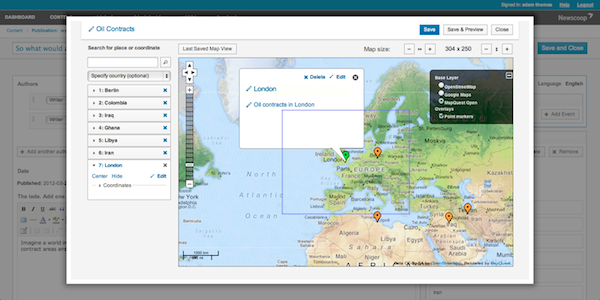Five ways to open source your newsroom

One of the standout features from the recent Newscoop 4 release is not a software feature per se, but the opening up of newsroom processes. Using open source software is one thing, but Newscoop 4 allows news organisations to go even further towards opening up their newsgathering and reporting methods. With the recent Guardian #opennews campaign and the latest round of the Knight News Challenge, never has the climate been more receptive to transparency in the newsroom. As the Guardian themselves said:
"What if readers were able to help newsdesks work out which stories were worth investing precious reporting resources in? What if all those experts who delight in telling us what's wrong with our stories after they've been published could be enlisted into giving us more clues beforehand? What if the process of working out what to investigate actually becomes part of the news itself?
Involving readers in news production builds lasting relationships. Taking our friends at TagesWoche as the inspiration, one of the focuses of Newscoop 4's development was engaging and managing community contribution. So, how can you use Newscoop 4 and a dash of workflow ingenuity to involve your readers more?
Let the people speak.
Newscoop 4's community tools allow citizens to become an integral part of newsgathering and sharing, creating deeper relationships with them. Newscoop allows visitors to sign up for a profile, comment on articles and even follow topics, just like this.
TagesWoche's Omnibox allows them to perform multiple actions on an article, including submitting private feedback to an author, or uploading files and pictures. All these community members are managed through Newscoop, meaning editors can even promote them to the staff so they can write and publish articles on the site themselves (use this power wisely!).
Stand out from the crowd.
News sites' design needs are so unique and important that we wrote our templating language for them. It's powerful, flexible and ensures that every site can not only look different, but can also work differently. Other CMS themes concentrate on look and feel. Newscoop 4's Themes focus on form and function because design is not just how pretty a site is, but how engaging it is to use.
Our New Custodian and Rockstar themes are the foundations on which engaging sites are built. They come as out-of-the-box community sites, replete with user profiles, activity streams and commenting functions, but you can add in much more. Facebook integration, user blogs, votes, polls, debates, interactive slideshows - all of this can be used to give your content dynamism and engagement.
Hold the front page!
Breaking news is online media's forte and Newscoop is designed to make the process of rearranging your front page easy through a drag and drop interface. Journalists and editors have the option of adding every article to the front page, and then simply dragging that article around to determine where on the page it appears. If one of your trusty news community submits a verified tip, pulling together a holding-place article and rearranging your front page can be done in seconds, while your reporters work on the details.
What's more, these Featured Article Lists can also be used in other parts of the site, so you can create flexible lists of just about anything. Use them to bring together articles and create dynamic sections or in-depth reports with multiple articles from your archive. Why not allow you readers to set the agenda and organise your sections and front-pages for you?
Mapping the story.
Geolocation is an asset. It allows for more detailed forms of content production and opens up new location-based revenue streams. Newscoop 4 allows journalists to effortlessly attach one or more locations to an article and then overlay this data onto their preferred map service (Newscoop supports Google Maps, Mapquest Open and OpenStreetMap). For peace of mind, data is located on your server, not with the map provider.
Attach urls, images, videos and more to the map points and then let your theme build Dynamic Maps, pulling in map data according to filters you specify (e.g. tags, keywords, date, geographical area). Use this to investigate crime trends, historical news archives or to build a truly hyperlocal news site that engages directly with the communities your news addresses.
Adapting to every device.
Delivering suitable content to all devices allows you to tell a special story to every individual reader. Newscoop's advanced browser detection allows you to customise your content down to the level of individual advertisment campaigns or communication channels for specific devices. Adaptive CSS means your site renders beautifully on all devices, all browsers, all sizes, with no extra development from you required.
So, what do you think? Do you have any other examples of how opening up newsrooms has been beneficial for independent media? Let us know in the comments below...
